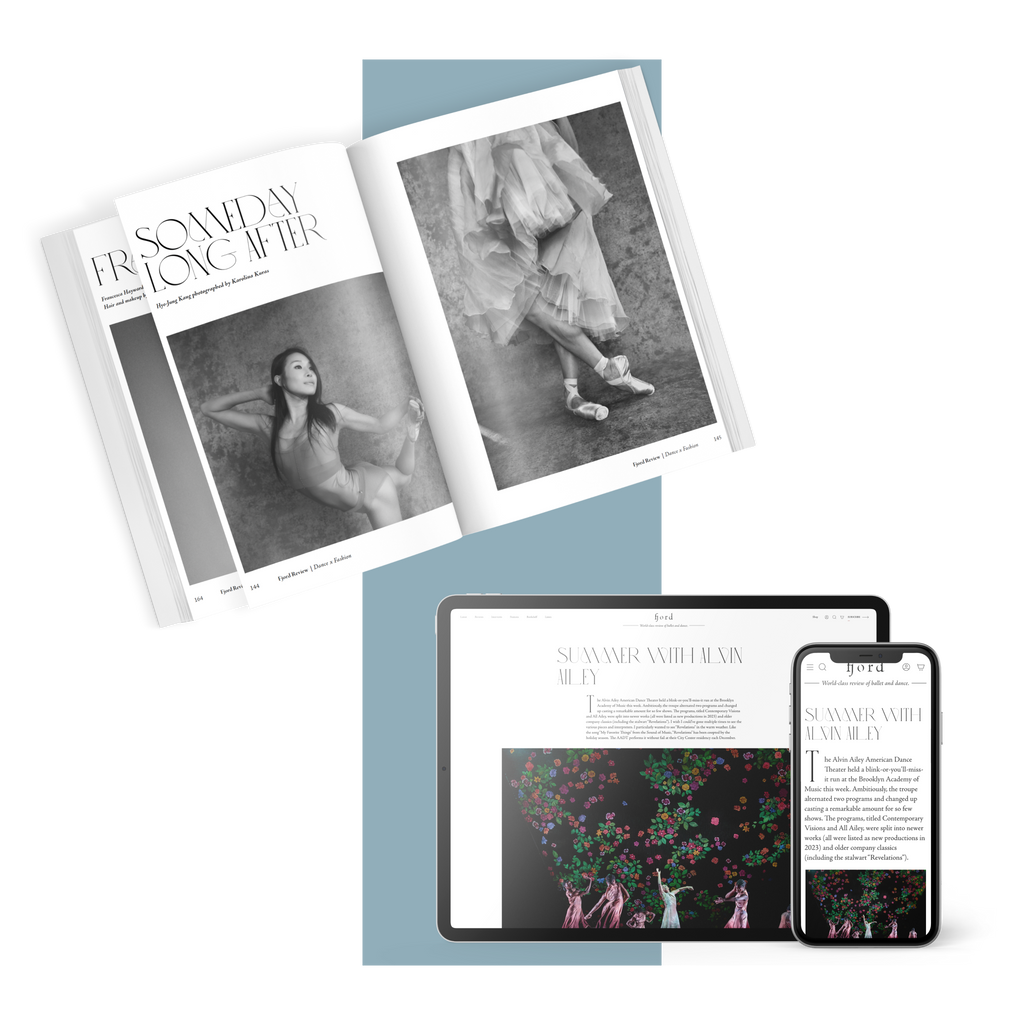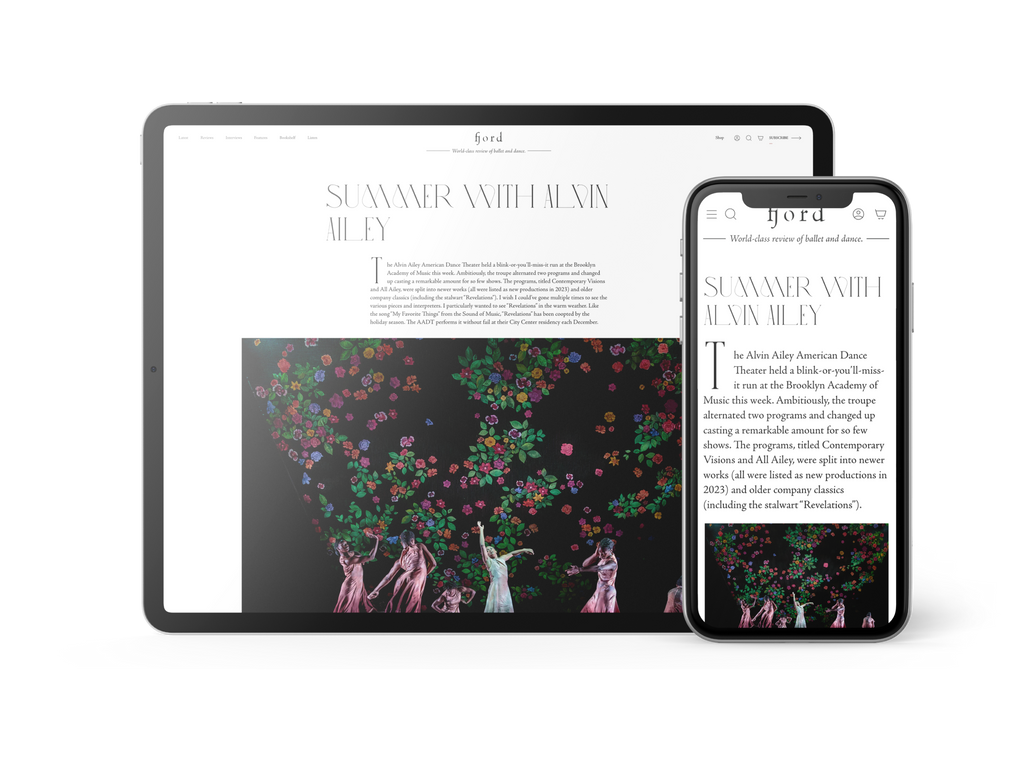Strong Foundations
The Sun King not only invented ballet in its modern form but in 1713 also founded the oldest ballet academy in the world.
Plus
World-class review of ballet and dance.
This performance of Alexander Whitley’s “Pattern Recognition,” which premiered at London’s Platform Theatre in April, was the kick-off to a five-leg autumn tour around the UK. The London-based choreographer has teamed up with digital designer Memo Akten to create a 50-minute contemporary work that uses motion-responsive technology to explore themes of consciousness, memory and fragmentation in the digital age. The technology comes in the form of eight chunky floor lamps that sense and track the dancers’ movements, responding with their own illuminated patterns. The lights, the programme makes clear, “are not pre-programmed but are driven only by the movement of the dancers.”
Performance
Place
Words

Alexander Whitley and Natalie Allen in “Pattern Recognition” by Alexander Whitley. Photograph by Tristram Kenton


“Uncommonly intelligent, substantial coverage.”
Your weekly source for world-class dance reviews, interviews, articles, and more.
Already a paid subscriber? Login
The Sun King not only invented ballet in its modern form but in 1713 also founded the oldest ballet academy in the world.
PlusThe Choreographic Platform Austria (CPA) held in Salzburg from 20–22 November 2025, has become a biennial focal point for contemporary dance in Austria.
PlusIt’s “Nutcracker” season at San Francisco Ballet—36 performances packed into three weeks—which means that the company is currently serving two distinct audiences.
PlusLast week I caught up with choreographer Pam Tanowitz and Opera Philadelphia’s current general director and president, countertenor Anthony Roth Costanzo to talk about “The Seasons,” the company’s latest production premiering at the Kimmel Center’s 600-plus seat Perelman Theater on December 19.
Plus
comments